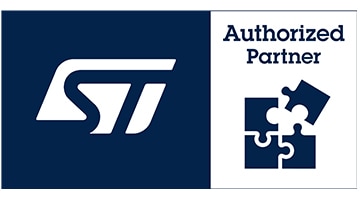STMicroelectronics L9963E | Demoboard AEK-POW-BMS63EN
Battery management system module based on L9963E
Details
| Topologie | Battery Management System |
| IC-Revision | 1 |
Beschreibung
The AEK-POW-BMS63EN is a battery management system (BMS) evaluation board that can handle from 1 to 31 Li-ion battery nodes. Each battery node manages from 4 to 14 battery cells, for a voltage range between 48 V and 800 V.The board is based on the L9963E, which is designed for operation in both hybrid (HE) and full electric (BE) vehicles using lithium battery packs, but its use can be extended to other Transportation and Industrial applications.The main activity of the L9963E is monitoring cells and battery node status through stack voltage measurement, cell voltage measurement, temperature measurement, and coulomb counting. Measurement and diagnostic tasks can be executed either on demand or periodically, with a programmable cycle interval. Measurement data are available for an external microcontroller to perform charge balancing and to compute the state of charge (SOC) and the state of health (SOH).The main functions of a standard BMS are monitoring and protecting the battery pack.The monitoring function is related to the measurement of the battery current, voltage, and temperature. The protection function brings the system to a safety state in case of under or overvoltage and overheating.The AEK-POW-BMS63EN provides an elaborate monitoring network to sense the voltage, current, and temperature of each cell. This sensing allows elaborating the SOC of each battery cell and, consequently, the state of charge of all battery packs. The SOC allows assessing the remaining battery capacity, which equates to the remaining driving range.For maintenance reasons, it is important to monitor the SOC estimation over time. According to our algorithm for the SOC calculation, the more the SOC differs from its nominal value (that is, its value when the batteries are new), the more a cell of the battery pack risks over-discharge. Thus, the SOC evolution over time allows asserting the state of health (SOH) of a cell or a battery pack to spot early indications that a cell is at risk of over-discharge or overcharging.The SOC of a battery cell is required to maintain its safe operation and duration during charge, discharge, and storage. However, SOC cannot be measured directly and is estimated from other measurements and known parameters (such as characterization curves or look-up tables). This information on the battery cells is necessary to determine how the voltage varies according to the current, the temperature, etc., on the basis of the battery chemical composition and production lot used.The AEK-POW-BMS63EN can work in two different daisy chain topologies: centralized and dual access ring.In a centralized daisy chain configuration, a series of BMS is connected to an MCU board through a single transceiver connected to the AEK-POW-BMS63EN isolated ISOLport. The BMS are connected to each other through the isolated ISOH port.The MCU communicates with the AEK-COM-ISOSPI1 hosted L9963T transceiver through the SPI protocol. The transceiver converts these signals into ISO SPI signals to communicate with the BMS.The AEK-COM-ISOSPI1 allows converting SPI signals in isolated SPI signals, thereby reducing the number of necessary wires from 4 to 2 and implementing differential communication for higher noise immunity.A dual access ring configuration is also possible by adding another transceiver that makes the communication bidirectional. The secondary ring is used as a backup in case the primary ring fails. Data moves in opposite directions around the rings, and each ring remains independent of the other unless the primary ring fails. The two rings are connected to continue the flow of data traffic.In AutoDevKit ecosystem software package, we created two example demos (one for centralized and one for dual access ring configuration) to elaborate SOC and SOH, using Li-ion batteries. Battery packs may have different SOCs, and balancing is necessary to bring them all to the same charge level. After detecting the lowest charge in the battery pack, all the other battery nodes are discharged to reach its level. The demos explain how to activate the internal MOSFETs of the L9963E, which short-circuit the cell on an external dissipation resistor to discharge it. Passive cell balancing can be performed either via the L9963E internal MOSFETs or via external MOSFETs/resistors. The controller can either manually control the balancing drivers or start a balancing task with a fixed duration. In the second case called silent mode, the balancing may be programmed to continue even when the IC enters a low power mode, to avoid unnecessary current absorption from the battery pack. The balancing function is necessary to lengthen the battery capacity and its duration.Different MCUs can be used. In our demos we used the AEK-MCU-C4MLIT1, while other ASIL-B and ASIL-D microcontrollers of the SPC58 Chorus family are supported.
Typische Anwendungen
- Battery Management System (BMS)
- Battery Management System (BMS) for Electro mobility
Weiterführende Informationen
Artikeldaten
| Artikel Nr. | Datenblatt | Simulation | Downloads | Status | Produktserie | λDom typ. (nm) | Farbe | λPeak typ. (nm) | IV typ. (mcd) | VF typ. (V) | Chiptechnologie | 2θ50% typ. (°) | Gender | Pins | Typ | Wire Section | Kontaktbeschichtung | IR (A) | Arbeitsspannung (V (AC)) | Kontaktwiderstand (mΩ) | Verpackung | VPE (pcs) | Stranded Wire Section (AWG) | Stranded Wire Section (Metric) | C | Tol. C | VR (V (DC)) | Bauform | Betriebstemperatur | Q (%) | DF (%) | RISO | Keramiktyp | L (mm) | W (mm) | H (mm) | Fl (mm) | Schlüsselweite (mm) | Ti | Brennbarkeitsklasse | Anwendung | Interface typ | Montageart | IR 1 (A) | Farbe | Raster (mm) | Reihen | PCB/Kabel/Panel | Tol. R | Muster | |
|---|---|---|---|---|---|---|---|---|---|---|---|---|---|---|---|---|---|---|---|---|---|---|---|---|---|---|---|---|---|---|---|---|---|---|---|---|---|---|---|---|---|---|---|---|---|---|---|---|---|---|---|
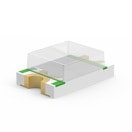 | 150080GS75000 | SPEC | 7 Dateien | Aktiv i| Produktion ist aktiv. Erwartete Lebenszeit: >10 Jahre. | WL-SMCW SMT Mono-color Chip LED Waterclear | 525 | Grün | 515 | 450 | 3.2 | InGaN | 140 | – | – | – | – | – | – | – | – | Tape and Reel | 4000 | – | – | – | – | – | 0805 | -40 °C up to +85 °C | – | – | – | – | 2 | 1.25 | 0.7 | – | – | – | – | – | – | SMT | – | – | – | – | – | – | ||
| 885012006053 | SPEC | 9 Dateien | Aktiv i| Produktion ist aktiv. Erwartete Lebenszeit: >10 Jahre. | WCAP-CSGP MLCCs 50 V(DC) | – | – | – | – | – | – | – | – | – | – | – | – | – | – | – | 7" Tape & Reel | 4000 | – | – | 22 pF | ±5% | 50 | 0603 | -55 °C up to +125 °C | 840 | – | 10 GΩ | NP0 Klasse I | 1.6 | 0.8 | 0.8 | 0.4 | – | – | – | – | – | – | – | – | – | – | – | – | |||
| 885012006054 | SPEC | 9 Dateien | Aktiv i| Produktion ist aktiv. Erwartete Lebenszeit: >10 Jahre. | WCAP-CSGP MLCCs 50 V(DC) | – | – | – | – | – | – | – | – | – | – | – | – | – | – | – | 7" Tape & Reel | 4000 | – | – | 33 pF | ±5% | 50 | 0603 | -55 °C up to +125 °C | 1000 | – | 10 GΩ | NP0 Klasse I | 1.6 | 0.8 | 0.8 | 0.4 | – | – | – | – | – | – | – | – | – | – | – | – | |||
| 885012206085 | SPEC | 9 Dateien | Aktiv i| Produktion ist aktiv. Erwartete Lebenszeit: >10 Jahre. | WCAP-CSGP MLCCs 50 V(DC) | – | – | – | – | – | – | – | – | – | – | – | – | – | – | – | 7" Tape & Reel | 4000 | – | – | 2.2 nF | ±10% | 50 | 0603 | -55 °C up to +125 °C | – | 2.5 | 10 GΩ | X7R Klasse II | 1.6 | 0.8 | 0.8 | 0.4 | – | – | – | – | – | – | – | – | – | – | – | – | |||
| 885012206087 | SPEC | 9 Dateien | Aktiv i| Produktion ist aktiv. Erwartete Lebenszeit: >10 Jahre. | WCAP-CSGP MLCCs 50 V(DC) | – | – | – | – | – | – | – | – | – | – | – | – | – | – | – | 7" Tape & Reel | 4000 | – | – | 4.7 nF | ±10% | 50 | 0603 | -55 °C up to +125 °C | – | 2.5 | 10 GΩ | X7R Klasse II | 1.6 | 0.8 | 0.8 | 0.4 | – | – | – | – | – | – | – | – | – | – | – | – | |||
| 885012206088 | SPEC | 9 Dateien | Aktiv i| Produktion ist aktiv. Erwartete Lebenszeit: >10 Jahre. | WCAP-CSGP MLCCs 50 V(DC) | – | – | – | – | – | – | – | – | – | – | – | – | – | – | – | 7" Tape & Reel | 4000 | – | – | 6.8 nF | ±10% | 50 | 0603 | -55 °C up to +125 °C | – | 2.5 | 10 GΩ | X7R Klasse II | 1.6 | 0.8 | 0.8 | 0.4 | – | – | – | – | – | – | – | – | – | – | – | – | |||
| 885012206089 | SPEC | 9 Dateien | Aktiv i| Produktion ist aktiv. Erwartete Lebenszeit: >10 Jahre. | WCAP-CSGP MLCCs 50 V(DC) | – | – | – | – | – | – | – | – | – | – | – | – | – | – | – | 7" Tape & Reel | 4000 | – | – | 10 nF | ±10% | 50 | 0603 | -55 °C up to +125 °C | – | 2.5 | 10 GΩ | X7R Klasse II | 1.6 | 0.8 | 0.8 | 0.4 | – | – | – | – | – | – | – | – | – | – | – | – | |||
| 885012206093 | SPEC | 9 Dateien | Aktiv i| Produktion ist aktiv. Erwartete Lebenszeit: >10 Jahre. | WCAP-CSGP MLCCs 50 V(DC) | – | – | – | – | – | – | – | – | – | – | – | – | – | – | – | 7" Tape & Reel | 4000 | – | – | 47 nF | ±10% | 50 | 0603 | -55 °C up to +125 °C | – | 3 | 10 GΩ | X7R Klasse II | 1.6 | 0.8 | 0.8 | 0.4 | – | – | – | – | – | – | – | – | – | – | – | – | |||
| 885012206094 | SPEC | 9 Dateien | Aktiv i| Produktion ist aktiv. Erwartete Lebenszeit: >10 Jahre. | WCAP-CSGP MLCCs 50 V(DC) | – | – | – | – | – | – | – | – | – | – | – | – | – | – | – | 7" Tape & Reel | 4000 | – | – | 68 nF | ±10% | 50 | 0603 | -55 °C up to +125 °C | – | 3 | 7.4 GΩ | X7R Klasse II | 1.6 | 0.8 | 0.8 | 0.4 | – | – | – | – | – | – | – | – | – | – | – | – | |||
| 885012206095 | SPEC | 9 Dateien | Aktiv i| Produktion ist aktiv. Erwartete Lebenszeit: >10 Jahre. | WCAP-CSGP MLCCs 50 V(DC) | – | – | – | – | – | – | – | – | – | – | – | – | – | – | – | 7" Tape & Reel | 4000 | – | – | 100 nF | ±10% | 50 | 0603 | -55 °C up to +125 °C | – | 3 | 5 GΩ | X7R Klasse II | 1.6 | 0.8 | 0.8 | 0.4 | – | – | – | – | – | – | – | – | – | – | – | – | |||
| 885012207079 | SPEC | 8 Dateien | Aktiv i| Produktion ist aktiv. Erwartete Lebenszeit: >10 Jahre. | WCAP-CSGP MLCCs 25 V(DC) | – | – | – | – | – | – | – | – | – | – | – | – | – | – | – | 7" Tape & Reel | 3000 | – | – | 2.2 µF | ±10% | 25 | 0805 | -55 °C up to +125 °C | – | 10 | 0.05 GΩ | X7R Klasse II | 2 | 1.25 | 1.25 | 0.5 | – | – | – | – | – | – | – | – | – | – | – | – | |||
| 885012207103 | SPEC | 9 Dateien | Aktiv i| Produktion ist aktiv. Erwartete Lebenszeit: >10 Jahre. | WCAP-CSGP MLCCs 50 V(DC) | – | – | – | – | – | – | – | – | – | – | – | – | – | – | – | 7" Tape & Reel | 3000 | – | – | 1 µF | ±10% | 50 | 0805 | -55 °C up to +125 °C | – | 10 | 0.1 GΩ | X7R Klasse II | 2 | 1.25 | 1.25 | 0.5 | – | – | – | – | – | – | – | – | – | – | – | – | |||
| 885012208094 | SPEC | 9 Dateien | Aktiv i| Produktion ist aktiv. Erwartete Lebenszeit: >10 Jahre. | WCAP-CSGP MLCCs 50 V(DC) | – | – | – | – | – | – | – | – | – | – | – | – | – | – | – | 7" Tape & Reel | 2000 | – | – | 4.7 µF | ±10% | 50 | 1206 | -55 °C up to +125 °C | – | 10 | 0.02 GΩ | X7R Klasse II | 3.2 | 1.6 | 1.6 | 0.5 | – | – | – | – | – | – | – | – | – | – | – | – | |||
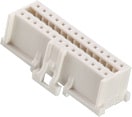 | 624030213322 | SPEC | – | 3 Dateien | Aktiv i| Produktion ist aktiv. Erwartete Lebenszeit: >10 Jahre. | WR-WTB 2.00 mm Female Dual Row Terminal Housing w. positive locking | – | – | – | – | – | – | – | Weiblich | 30 | Klemmengehäuse | – | – | – | – | – | Beutel | – | – | – | – | – | – | – | -25 °C up to +85 °C | – | – | 1000 MΩ | – | 33.4 | – | – | – | – | – | – | – | – | – | – | – | 2 | – | Kabel | – | |
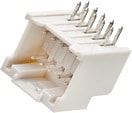 | 62403021722 | SPEC | – | 7 Dateien | Aktiv i| Produktion ist aktiv. Erwartete Lebenszeit: >10 Jahre. | WR-WTB 2.00 mm Male Header | – | – | – | – | – | – | – | Männlich | 30 | Horizontal | – | Zinn | 3 | 250 | 20 | Tube | – | – | – | – | – | – | – | -25 °C up to +85 °C | – | – | 1000 MΩ | – | 33.4 | – | – | – | – | – | – | – | – | THT | 3 | Weiß | 2 | – | PCB | max. | |
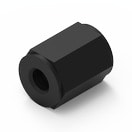 | 970080365 | SPEC | – | 3 Dateien | Aktiv i| Produktion ist aktiv. Erwartete Lebenszeit: >10 Jahre. | WA-SPAII Plastic Spacer Stud, metric, internal/ internal | – | – | – | – | – | – | – | – | – | – | – | – | – | – | – | Beutel | – | – | – | – | – | – | – | -30 °C up to +110 °C | – | – | – | – | 8 | – | – | – | 6 | M3 | UL94 HB | – | – | – | – | Schwarz | – | – | – | – | |
 | 62400113722 | SPEC | – | 3 Dateien | Aktiv i| Produktion ist aktiv. Erwartete Lebenszeit: >10 Jahre. | WR-WTB 2.00 mm Female Dual Row Crimp Contact | – | – | – | – | – | – | – | Weiblich | – | Crimpkontakt | 28 to 22 (AWG) 0.081 to 0.326 (mm²) | Zinn | 3 | 250 | 20 | große Rolle | 10000 | 28 to 22 (AWG) | 0.081 to 0.326 (mm²) | – | – | – | – | -25 °C up to +85 °C | – | – | – | – | – | – | – | – | – | – | – | – | – | – | 3 | – | 2 | – | Kabel | max. | |
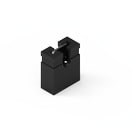 | 60900213421 | SPEC | – | 3 Dateien | Aktiv i| Produktion ist aktiv. Erwartete Lebenszeit: >10 Jahre. | WR-PHD Jumper | – | – | – | – | – | – | – | Jumper | 1 | – | – | Gold | 3 | 250 | 20 | Beutel | – | – | – | – | – | – | – | -40 °C up to +125 °C | – | – | 1000 MΩ | – | 2.44 | – | – | – | – | – | – | – | – | – | – | Schwarz | 2.54 | – | – | max. | |
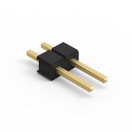 | 61300211121 | SPEC | – | 7 Dateien | Aktiv i| Produktion ist aktiv. Erwartete Lebenszeit: >10 Jahre. | WR-PHD Pin Header - Single | – | – | – | – | – | – | – | Stiftleiste | 2 | Gerade | – | Gold | 3 | 250 | 20 | Beutel | – | – | – | – | – | – | – | -40 °C up to +105 °C | – | – | 1000 MΩ | – | 5.08 | – | – | – | – | – | – | – | – | THT | – | – | 2.54 | Single | – | max. | |
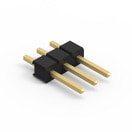 | 61300311121 | SPEC | – | 7 Dateien | Aktiv i| Produktion ist aktiv. Erwartete Lebenszeit: >10 Jahre. | WR-PHD Pin Header - Single | – | – | – | – | – | – | – | Stiftleiste | 3 | Gerade | – | Gold | 3 | 250 | 20 | Beutel | – | – | – | – | – | – | – | -40 °C up to +105 °C | – | – | 1000 MΩ | – | 7.62 | – | – | – | – | – | – | – | – | THT | – | – | 2.54 | Single | – | max. | |
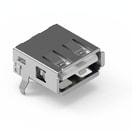 | 61400416021 | SPEC | – | 6 Dateien | Aktiv i| Produktion ist aktiv. Erwartete Lebenszeit: >10 Jahre. | WR-USB Standard Connectors | – | – | – | – | – | – | – | Buchse | 4 | Horizontal | – | selektiv vergoldet | 1.5 | 30 | 20 | Tray | – | – | – | – | – | – | – | -40 °C up to +105 °C | – | – | 1000 MΩ | – | – | – | – | – | – | – | – | USB 2.0 | Type A | THT | 1.5 | Weiß | – | – | – | max. | |
| 885012206102 | SPEC | 7 Dateien | Aktiv i| Produktion ist aktiv. Erwartete Lebenszeit: >10 Jahre. | WCAP-CSGP MLCCs 100 V(DC) | – | – | – | – | – | – | – | – | – | – | – | – | – | – | – | 7" Tape & Reel | 4000 | – | – | 100 pF | ±10% | 100 | 0603 | -55 °C up to +125 °C | – | 2.5 | 10 GΩ | X7R Klasse II | 1.6 | 0.8 | 0.8 | 0.4 | – | – | – | – | – | – | – | – | – | – | – | – | |||
| 885012206120 | SPEC | 7 Dateien | Aktiv i| Produktion ist aktiv. Erwartete Lebenszeit: >10 Jahre. | WCAP-CSGP MLCCs 100 V(DC) | – | – | – | – | – | – | – | – | – | – | – | – | – | – | – | 7" Tape & Reel | – | – | – | 100 nF | ±10% | 100 | 0603 | -55 °C up to +125 °C | – | 5 | 1 GΩ | X7R Klasse II | 1.6 | 0.8 | 0.8 | 0.4 | – | – | – | – | – | – | – | – | – | – | – | – | |||
| 885012209073 | SPEC | 9 Dateien | Aktiv i| Produktion ist aktiv. Erwartete Lebenszeit: >10 Jahre. | WCAP-CSGP MLCCs 50 V(DC) | – | – | – | – | – | – | – | – | – | – | – | – | – | – | – | 7" Tape & Reel | – | – | – | 10 µF | ±10% | 50 | 1210 | -55 °C up to +125 °C | – | 10 | 0.01 GΩ | X7R Klasse II | 3.2 | 2.5 | 2.5 | 0.6 | – | – | – | – | – | – | – | – | – | – | – | – | |||
| 885012209071 | SPEC | 7 Dateien | Aktiv i| Produktion ist aktiv. Erwartete Lebenszeit: >10 Jahre. | WCAP-CSGP MLCCs 100 V(DC) | – | – | – | – | – | – | – | – | – | – | – | – | – | – | – | 7" Tape & Reel | – | – | – | 2.2 µF | ±10% | 100 | 1210 | -55 °C up to +125 °C | – | 5 | 0.05 GΩ | X7R Klasse II | 3.2 | 2.5 | 2.5 | 0.75 | – | – | – | – | – | – | – | – | – | – | – | – | |||
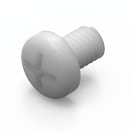 | 97790403111 | SPEC | – | 3 Dateien | Aktiv i| Produktion ist aktiv. Erwartete Lebenszeit: >10 Jahre. | WA-SCRW Linsenkopfschraube M3 mit Kreuzschlitz | – | – | – | – | – | – | – | – | – | – | – | – | – | – | – | Lose | 2000 | – | – | – | – | – | – | -30 °C up to +85 °C | – | – | – | – | 4 | – | – | – | – | – | UL94 V-2 | – | – | – | – | Natur | – | – | – | – | |
| 885012206125 | SPEC | 8 Dateien | Aktiv i| Produktion ist aktiv. Erwartete Lebenszeit: >10 Jahre. | WCAP-CSGP MLCCs 50 V(DC) | – | – | – | – | – | – | – | – | – | – | – | – | – | – | – | 7" Tape & Reel | – | – | – | 220 nF | ±5% | 50 | 0603 | -55 °C up to +125 °C | – | 10 | 2.3 GΩ | X7R Klasse II | 1.6 | 0.8 | 0.8 | 0.4 | – | – | – | – | – | – | – | – | – | – | – | – |
| Muster |
|---|
| Artikel Nr. | Datenblatt | Simulation | Downloads | Status | Produktserie | λDom typ. (nm) | Farbe | λPeak typ. (nm) | IV typ. (mcd) | VF typ. (V) | Chiptechnologie | 2θ50% typ. (°) | Gender | Pins | Typ | Wire Section | Kontaktbeschichtung | IR (A) | Arbeitsspannung (V (AC)) | Kontaktwiderstand (mΩ) | Verpackung | VPE (pcs) | Stranded Wire Section (AWG) | Stranded Wire Section (Metric) | C | Tol. C | VR (V (DC)) | Bauform | Betriebstemperatur | Q (%) | DF (%) | RISO | Keramiktyp | L (mm) | W (mm) | H (mm) | Fl (mm) | Schlüsselweite (mm) | Ti | Brennbarkeitsklasse | Anwendung | Interface typ | Montageart | IR 1 (A) | Farbe | Raster (mm) | Reihen | PCB/Kabel/Panel | Tol. R | Muster |
|---|





